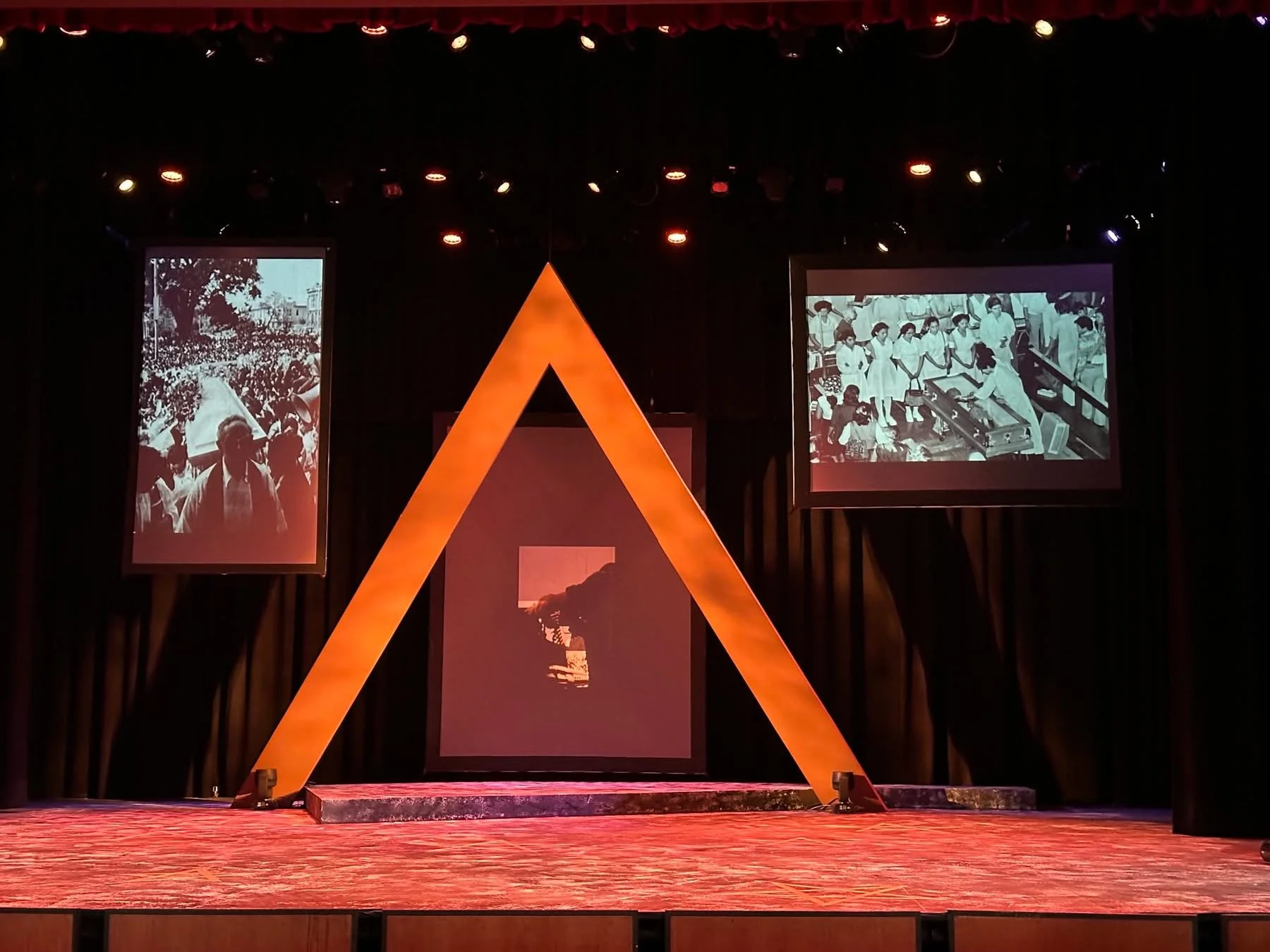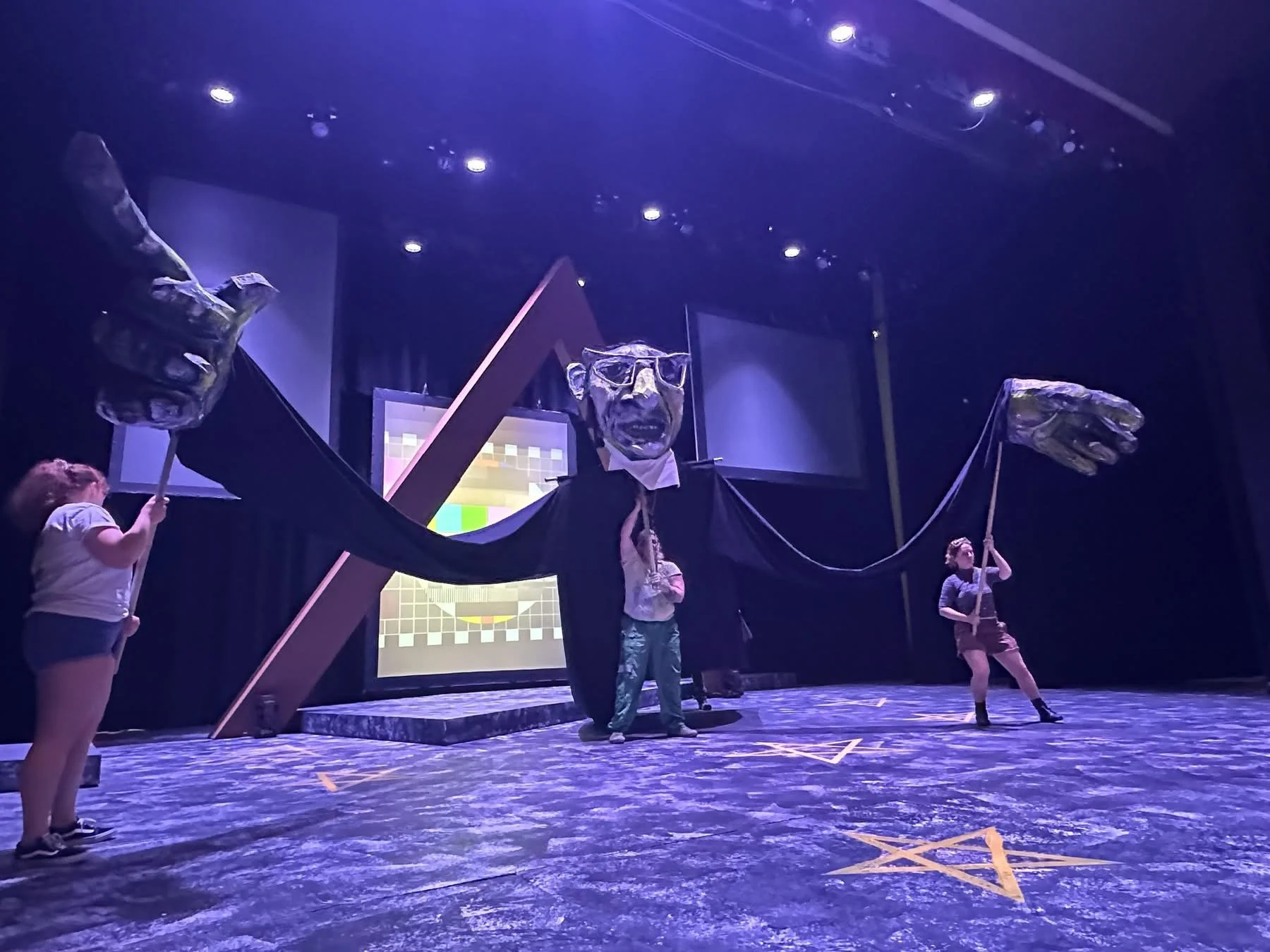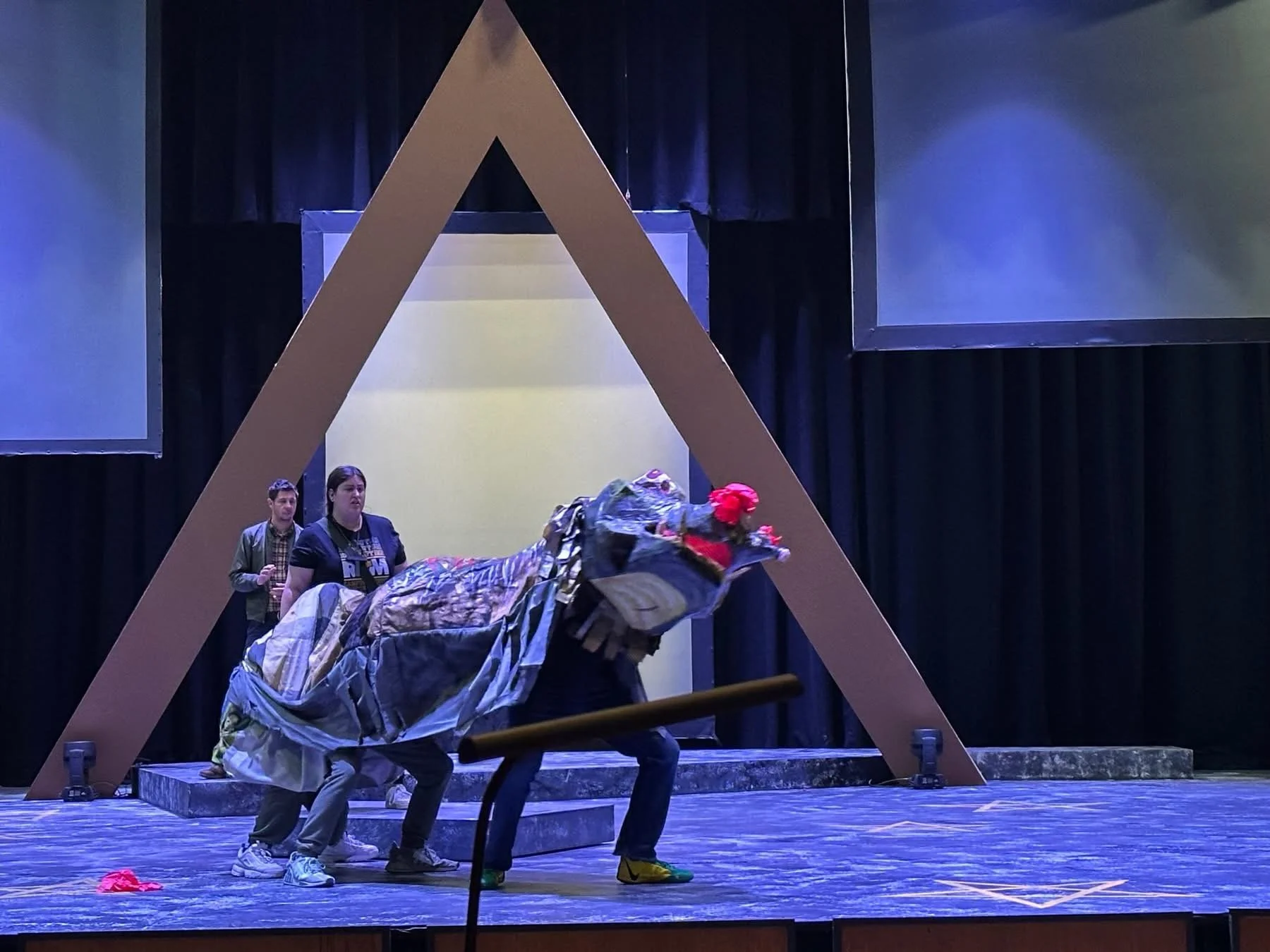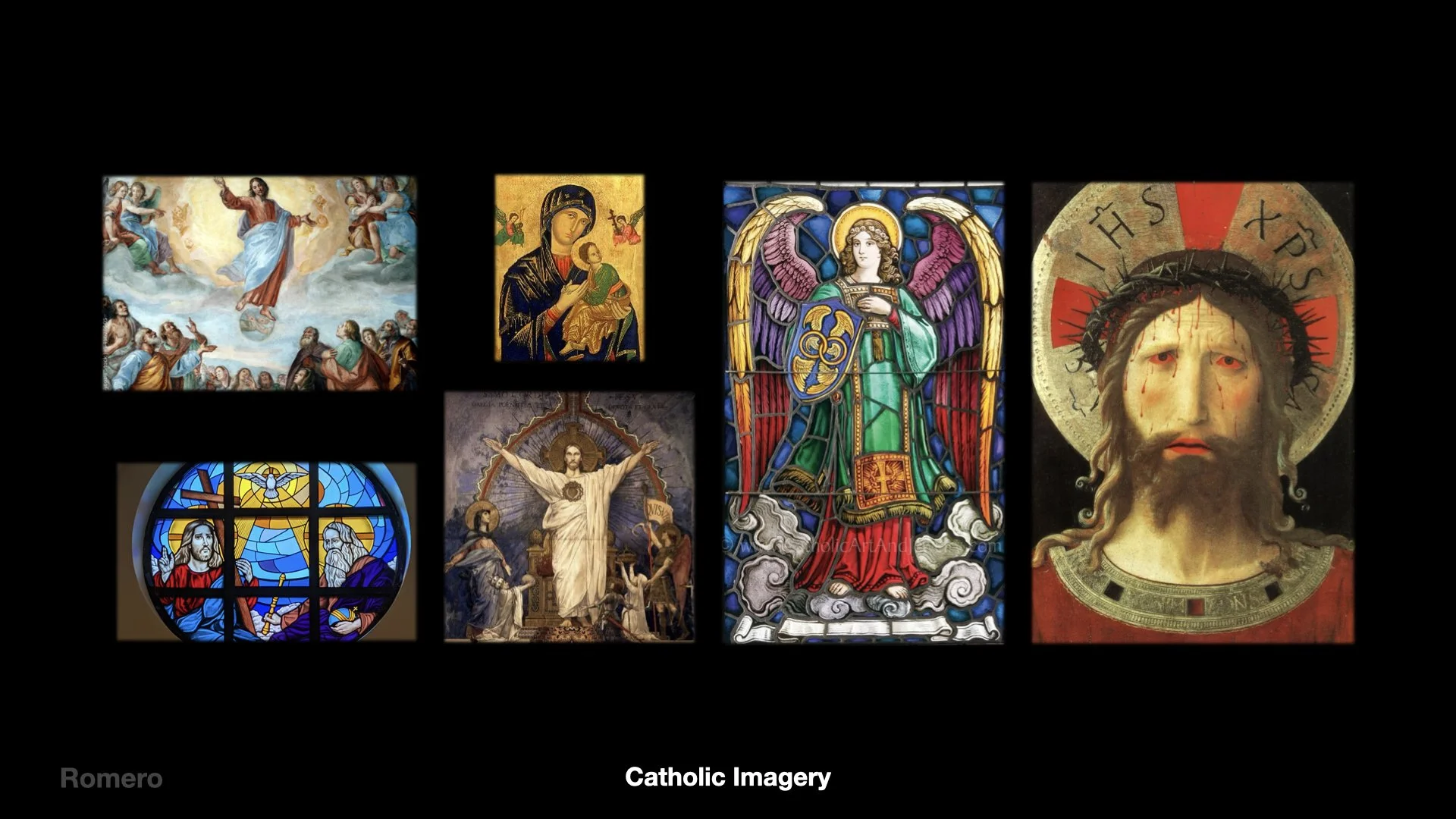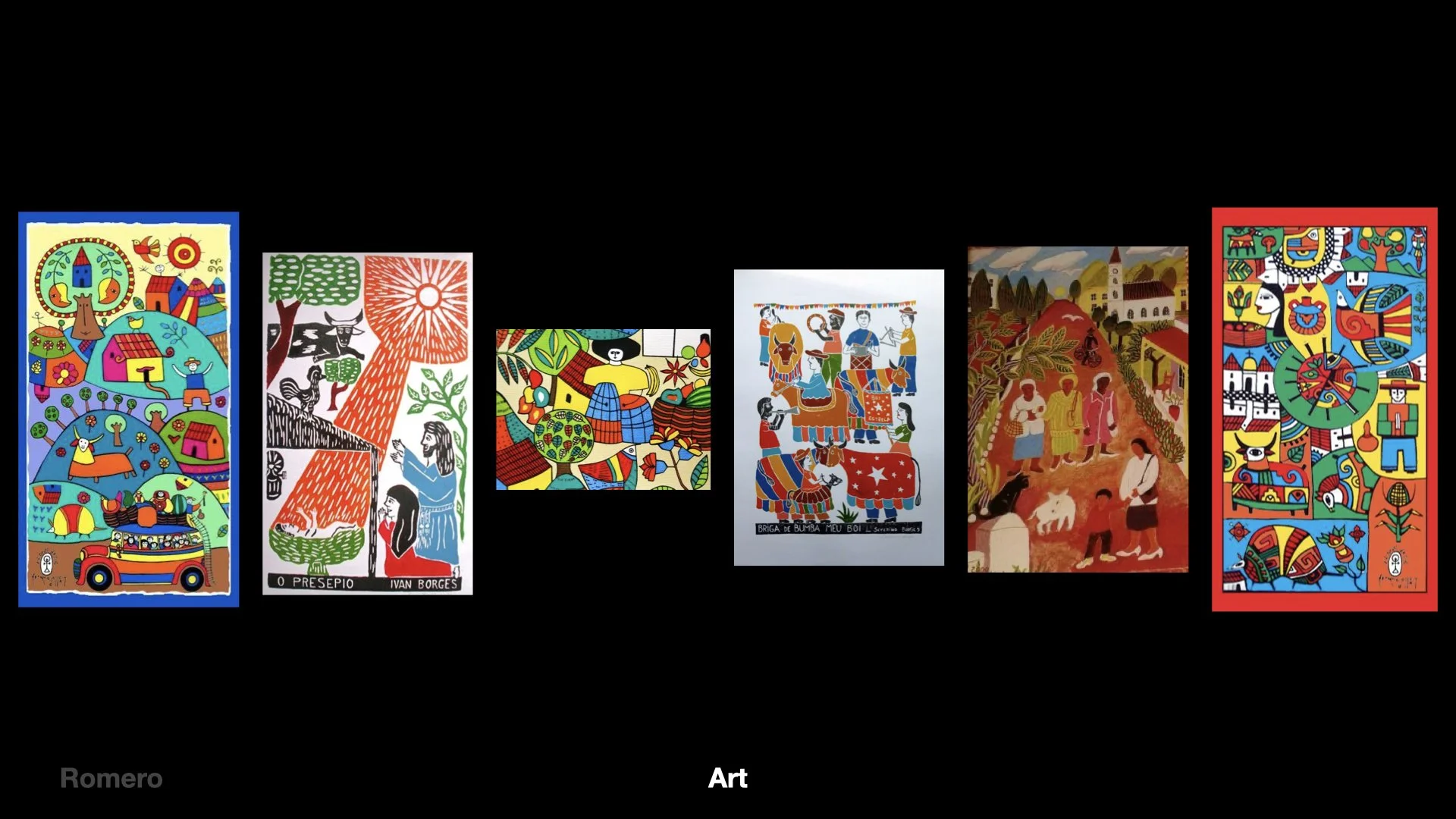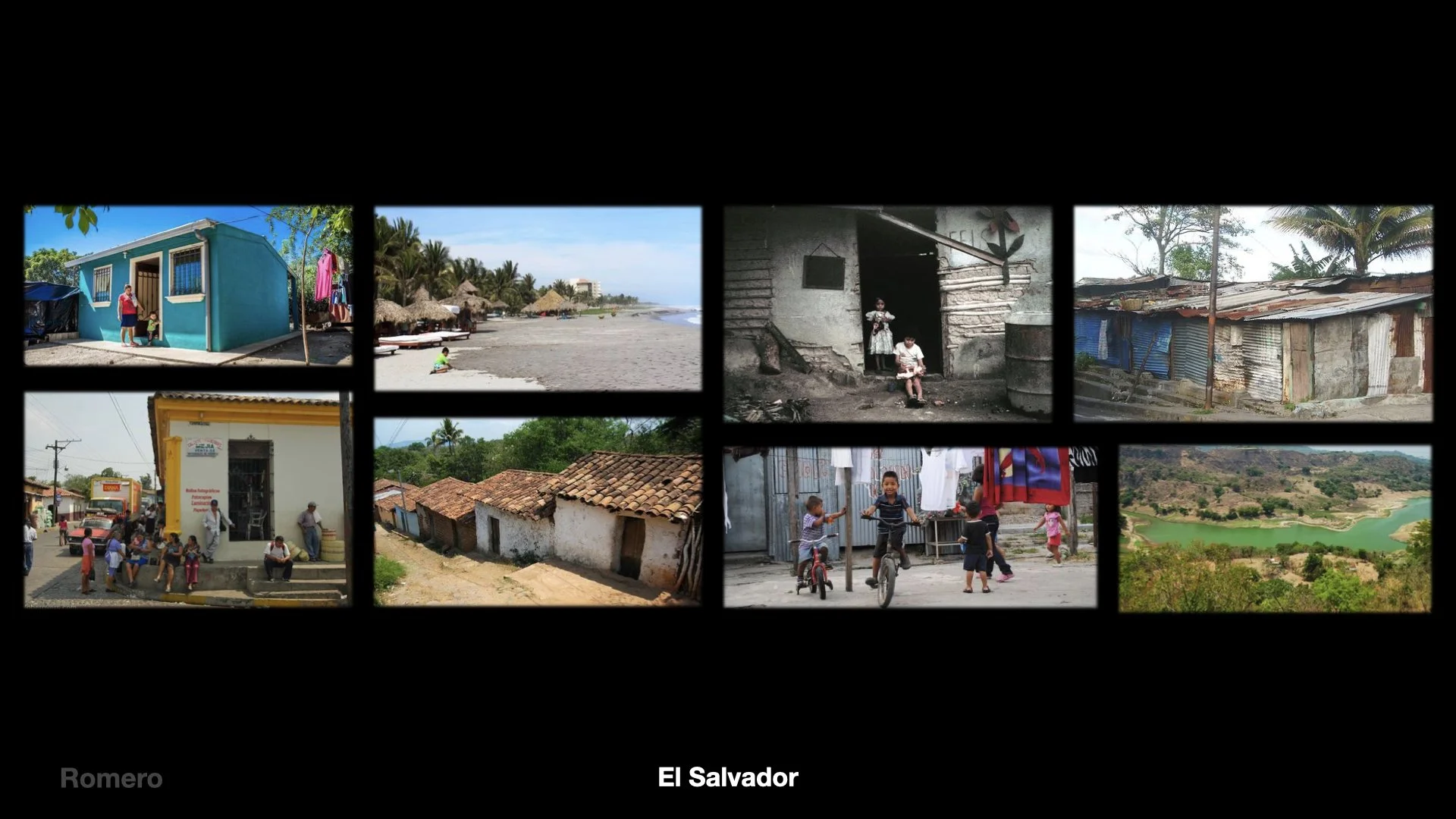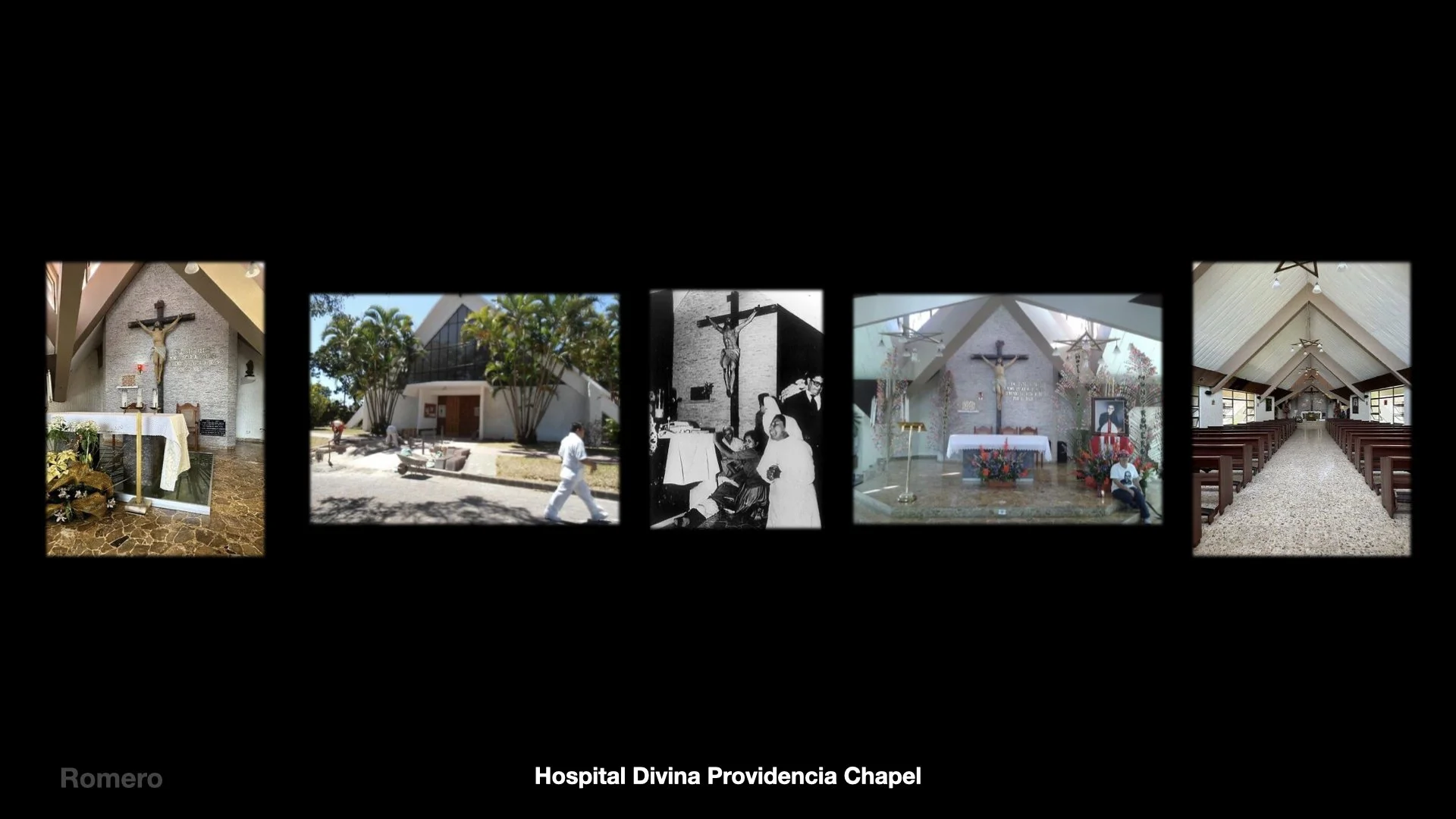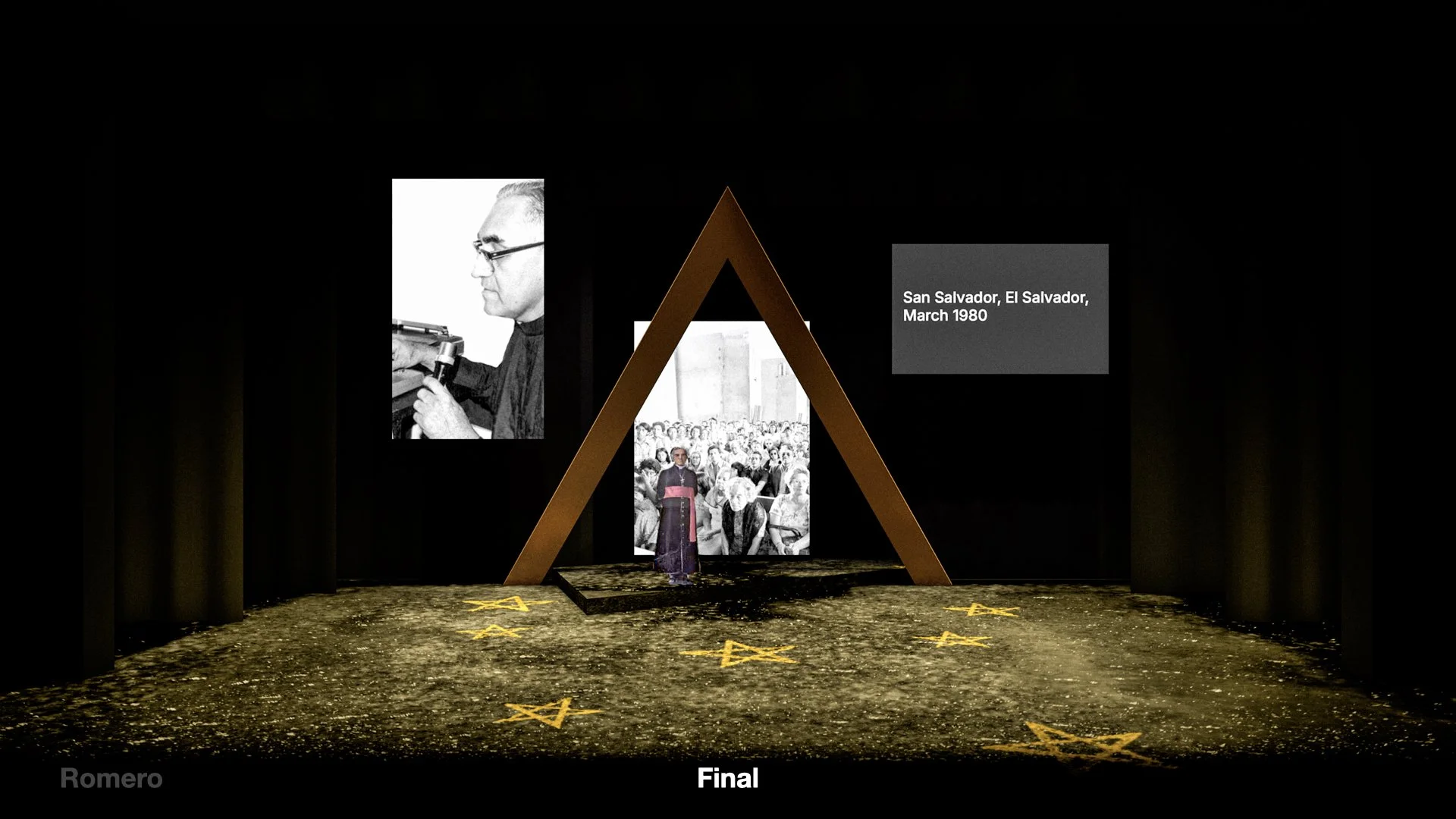Framing the Martyr: Scenic Design as Memory Work in Romero
Scenic Design Reflections on Faith, Resistance, and the Visual Language of Memory
Introduction
When I first read Xiomara Cornejo’s Romero, I was struck by how urgently it demanded space—space for memory, resistance, grief, and faith. This was more than a historical play. It was a haunting. A chorus of the disappeared. A story where time bends and ghosts speak directly to the living.
As a scenic designer, I’m always looking for the emotional logic behind a play’s visual world. With Romero, that logic wasn’t realism—it was ritual. The design had to hold sacredness and violence, tenderness and rupture. It had to remember.
From Roots to Radiance: Reflecting on The Penelopiad
While working on Romero, I found myself reflecting on my earlier design for The Penelopiad, another piece anchored in collective memory and reckoning. That set featured tree roots descending from above—a visual metaphor for the past growing downward, entangling the present.
Romero offered a reversal: the pull was upward, toward the light, but the pain was closer to the surface. In
In both works, ghosts linger. But in Romero, the dead do not wait. They challenge, question, and insist.
This thematic echo shaped my approach. The central arch in Romero became a cruciform frame—part church, part memory portal. A fractured platform and star-marked floor anchored the design in both the physical and spiritual worlds.
Romero Scenic Design Rendering
Created in Vectoworks and Photoshop.
The Language of Ritual and Rupture
From the beginning, it was clear the scenic language needed to support a nonlinear dramaturgy. The play leaps between beach and cathedral, war zone and heaven. Characters slip between time and identity. Puppetry, projections, and movement required the space to transform without literalism.
To meet this, the design integrated flexible symbolism:
A singular triangle echoing the altar at Hospital de la Divina Providencia
Projection surfaces that could shift from archival footage to abstract light
A textured black floor, marked with five-point stars—simultaneously sacred, childlike, and mournful
Puppeteer Lil Lamberta’s grotesque masks and larger-than-life scale helped puncture realism, allowing the audience to process trauma from a poetic distance. Projection designer Cherie Sampson’s layered media helped anchor each moment in living memory.
A Collaborative Process at the University of Missouri
This world premiere production of Romero was presented at the University of Missouri, directed by Dr. David Crespy, with performances running from April 23 to April 27, 2025. The process was supported by a generous team of collaborators and a robust research foundation.
The Romero Dramaturgy Website provided critical context, including historical insight into Archbishop Romero’s legacy, the civil conflict in El Salvador, and the canonization process. This resource informed not just the text—but the entire visual world of the play.
Romero Creative Team
Written by Xiomara Cornejo
Directed by Dr. David Crespy
Assistant Director Virginia Martinez
Dramaturgy Sara Wiley and Alice Gee
Scenic Design Brandon PT Davis
Costume Design Marc Vital
Lighting Design Vincente Williams
Sound Michael Webb, Joeseph Seevers,
Projections Cherie Sampson
Puppetry Lil Lamberta and Claire Bronchick
Technical Direction Zachary Alley
Stage Management Kaitlyn Bailey and Quintessa Rowland
Designing a Listening Space
Designing Romero wasn’t about decoration or historical illustration. It was about creating a container—visually and emotionally—for the act of listening. The play invites its audience to hear the cries of the past and recognize how they still echo today.
For me, the scenic design had to honor that. It had to sit in silence sometimes. It had to hold the stories without overwhelming them.
Romero is not about one man. It’s about a people. A nation. A spiritual reckoning still unfolding.
